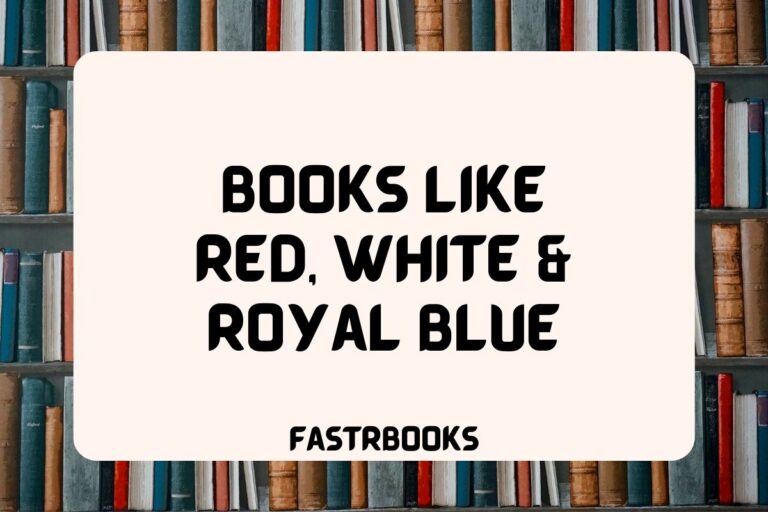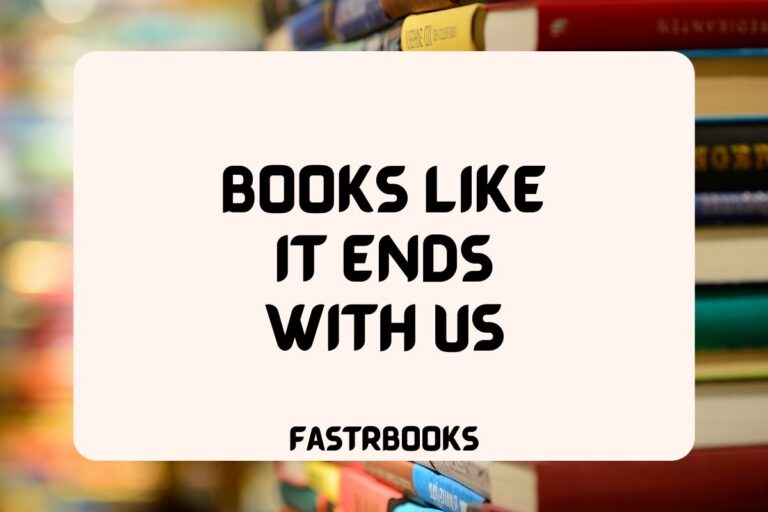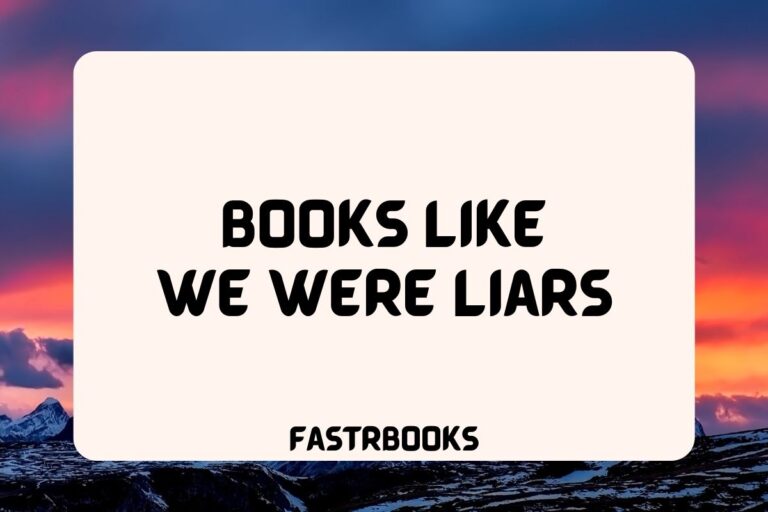14 Books Like Mistborn

Have you finished devouring Brandon Sanderson’s Mistborn trilogy and are left yearning for more?
You’re not alone!
The intricate magic system, the thrilling heist, and the ragtag crew of underdogs have captivated readers worldwide.
But fear not, fellow fantasy fan, for there’s a whole new world of stories waiting to be explored.
Buckle up, because we’re about to embark on a journey to discover captivating novels that will fill the void left by Mistborn.
Books Like Mistborn
1. The Name of the Wind by Patrick Rothfuss
This book is the first in “The Kingkiller Chronicle” series and follows the life of Kvothe, a gifted young man growing up to be the most notorious wizard his world has ever seen.
From his childhood in a troupe of traveling players to years spent as a near-feral orphan in a crime-ridden city, to his daringly brazen yet successful bid to enter a legendary school of magic, Kvothe’s story is anything but simple. Rothfuss weaves a narrative that is both epic and intimate, filled with magic, music, and mystery.
Major Similarities:
Both “The Name of the Wind” and “Mistborn” feature complex magic systems that are integral to their worlds and plots. The protagonists of both novels are young and gifted individuals who rise from tragic circumstances to challenge the established order.
Moreover, both series are celebrated for their well-developed characters and intricate plotting, appealing to readers who enjoy immersive world-building and a story that unfolds in unexpected ways.
2. The Lies of Locke Lamora by Scott Lynch
This novel is the first entry in the “Gentleman Bastard” series, centering on Locke Lamora, a con artist of unsurpassed skill in a city that runs on corruption and deceit.
Raised to pilfer and swindle by a master thief, Locke leads his band of brothers in elaborate heists against the city’s wealthy elite. But when they unwittingly cross a powerful crime lord, they’re dragged into a deadly game of power and revenge.
Major Similarities:
“The Lies of Locke Lamora” and “Mistborn” share a penchant for intricate plots and a dark, gritty setting. Both books feature protagonists who are skilled in the art of deception and use their talents to challenge the status quo.
The themes of camaraderie among thieves and the fight against a corrupt society resonate strongly in both stories, appealing to readers who enjoy tales of underdogs and anti-heroes.
3. Shadow and Bone by Leigh Bardugo
“Shadow and Bone” is the first book in the Grisha Trilogy, set in the Russian-inspired world of Ravka, which is divided by a swath of near impenetrable darkness crawling with monsters.
The story follows Alina Starkov, a soldier and orphan, who discovers she has a power that could be the key to setting her war-ravaged country free. As she trains as a member of the magical elite known as the Grisha, she learns that allies and enemies can be one and the same.
Major Similarities:
Similar to “Mistborn,” “Shadow and Bone” features a young, seemingly ordinary protagonist who discovers extraordinary powers and is thrust into a larger conflict that spans their entire world. Both novels have a richly developed magic system and a setting that feels both familiar and entirely new.
The themes of personal growth, the nature of power, and the fight against a great evil are central to both stories, appealing to readers who enjoy character-driven fantasy.
4. The Black Prism by Brent Weeks
This book is the first in the “Lightbringer” series and introduces a world where magic is manifested through light and color. Gavin Guile is the Prism, the most powerful person in the world, who can split light into its component colors and create magic.
He discovers he has a son, Kip, who is born in a backwater village but might be destined for greatness—or could be the catalyst for world-consuming war. The story weaves together epic battles, political intrigue, and personal dilemmas.
Major Similarities:
“The Black Prism” and “Mistborn” share complex, original magic systems at the heart of their stories. Both novels are set in intricately detailed worlds with a rich history and a political system that deeply affects the plot and characters.
The themes of legacy, power, and the struggle between control and freedom are explored in depth, making “The Black Prism” resonate with fans of “Mistborn” who appreciate a blend of action, strategy, and character development in their fantasy reads.
5. Gardens of the Moon by Steven Erikson
This is the first book in the “Malazan Book of the Fallen” series, which plunges readers into a complex world of magic, gods, and empires. The story begins with the Malazan Empire’s attempt to conquer the last remaining free city on the continent.
The narrative weaves together the tales of a wide array of characters, from soldiers and assassins to gods and ancient beings. Erikson’s storytelling is known for its intricate plots, deep world-building, and philosophical depth.
Major Similarities:
“Gardens of the Moon” and “Mistborn” both offer vast, epic fantasy worlds with complex societies, histories, and magic systems. The multi-layered plots and large casts of characters challenge and engage readers, while the themes of rebellion, power, and the moral ambiguities of war and governance are explored in depth.
Fans of “Mistborn” will appreciate Erikson’s similarly detailed world and the emphasis on a group of characters working together to achieve a monumental task.
6. The Way of Kings by Brandon Sanderson
The first installment in the “Stormlight Archive” series, “The Way of Kings,” introduces readers to the storm-ravaged world of Roshar, where society is built on the remnants of a once-great civilization.
The story follows multiple characters, including Kaladin, who trades his medical apprenticeship for a spear to protect his brother, only to become a slave; Shallan, who plots to steal an artifact from a scholar to save her family; and Dalinar, a highprince haunted by visions of Roshar’s ancient past.
Major Similarities:
Like “Mistborn,” “The Way of Kings” is written by Brandon Sanderson and showcases his talent for creating complex magic systems and deep, interconnected stories.
Both series feature characters with compelling arcs who grow significantly over time, set against the backdrop of a world with a rich history and culture. The focus on moral dilemmas, leadership, and the fight against overwhelming odds will resonate with “Mistborn” fans.
7. The Blade Itself by Joe Abercrombie
This book marks the beginning of “The First Law” trilogy and sets the stage for a gritty, dark fantasy saga. It follows the stories of Logen Ninefingers, a feared barbarian with a troubled past; Inquisitor Glokta, a torturer who despises all around him; and Jezal dan Luthar, a vain and self-obsessed nobleman.
As their paths intertwine, they are drawn into the machinations of a world on the brink of war, where no one is honorable and betrayal is a common currency.
Major Similarities:
“The Blade Itself” and “Mistborn” both feature dark, complex worlds where the line between good and evil is blurred. Abercrombie, like Sanderson, excels in creating deeply flawed yet fascinating characters whose personal growth is as compelling as the plot.
Both series involve intricate political maneuvering and the idea that individuals can make a significant impact in the broader world. Fans of Sanderson’s work will appreciate Abercrombie’s skill in character development and world-building.
8. Prince of Thorns by Mark Lawrence
“Prince of Thorns” is the first book in the “Broken Empire” trilogy, which tells the story of Jorg Ancrath, a prince who embarks on a dark quest for power after a devastating personal tragedy.
At only fifteen, Jorg leads a band of outlaws in a brutal campaign against those who wronged him. Lawrence’s narrative is stark, fast-paced, and doesn’t shy away from the darker aspects of its protagonist or the world he inhabits.
Major Similarities:
Both “Prince of Thorns” and “Mistborn” offer readers a dark and immersive fantasy experience, though “Prince of Thorns” takes a grittier approach. The protagonists of both stories are driven by deep personal loss and a desire for revenge or change in their corrupt worlds.
While Jorg and Vin (from “Mistborn”) have different methods and moral compasses, both characters develop significantly throughout their respective series. Readers who appreciate Sanderson’s complex characters and morally ambiguous worlds will find Lawrence’s work compelling.
9. The Bone Season by Samantha Shannon
This novel is the first in a dystopian fantasy series set in a future world where clairvoyants are persecuted by a totalitarian government. The story follows Paige Mahoney, a powerful clairvoyant working in the criminal underworld of Scion London.
After being captured, she is taken to a secret penal colony, where she discovers a larger supernatural struggle and her own potential role in it. Shannon creates a richly detailed world with a unique blend of magic and dystopia.
Major Similarities:
“The Bone Season” and “Mistborn” share themes of oppressive societies and the struggle for freedom and identity within them. Both feature strong, young female protagonists who uncover their own extraordinary abilities and become central to the fate of their worlds.
The detailed magic systems and the blend of fantasy elements with political intrigue make Shannon’s series appealing to fans of “Mistborn” who enjoy a mix of action, supernatural abilities, and a fight against tyranny.
10. The Priory of the Orange Tree by Samantha Shannon
This standalone epic fantasy novel presents a world divided between those who worship dragons as deities and those who view them as adversaries. At the heart of this divide is the story of Ead Duryan, serving in secret as a lady-in-waiting at the court of Queen Sabran the Ninth, who is herself targeted by assassins.
Ead is secretly a mage from a hidden society of dragon riders, tasked with protecting the queen with forbidden magic. Meanwhile, across the sea, Tané aspires to be a dragon rider but faces a choice that could see her life unravel. The novel explores themes of faith, forbidden love, and the looming threat of war.
Major Similarities:
Like “Mistborn,” “The Priory of the Orange Tree” features a richly developed world with intricate magic systems and a deep history that influences the present.
Both novels are praised for their strong, complex female protagonists who face immense challenges and evolve significantly over the course of their stories.
The themes of political intrigue, the struggle between different factions, and the looming threat of an ancient evil are central to both, appealing to readers who enjoy epic narratives with a broad scope and deep world-building.
11. The Emperor’s Blades by Brian Staveley
This novel is the first in “The Chronicle of the Unhewn Throne,” focusing on the children of the assassinated emperor of the Annurian Empire as they struggle to uncover the conspiracy behind their father’s murder and save their empire.
The story is told from the perspectives of the emperor’s three children: Kaden, the heir, who is secluded in a remote mountain monastery; Valyn, who is training with the empire’s special forces; and Adare, left to navigate the dangerous politics of the imperial court.
Each sibling faces their own trials and tribulations, revealing secrets that could either save or doom their world.
Major Similarities:
Both “The Emperor’s Blades” and “Mistborn” involve intricate political plots and the theme of an empire in turmoil following the loss of a ruler. The novels share a focus on a group of characters discovering their unique abilities and destinies in the face of overwhelming challenges.
The complex magic systems and the depth of the world-building, along with the emphasis on betrayal, loyalty, and the quest for power, make Staveley’s work resonate with fans of Brandon Sanderson’s intricate narratives and detailed fantasy worlds.
12. Red Sister by Mark Lawrence
The first book in “The Book of the Ancestor” trilogy introduces a world on the brink of extinction, where only a narrow band of habitable land remains, kept warm by a fading sun.
The story follows Nona, a young girl saved from execution and brought to the Convent of Sweet Mercy, where girls are trained as assassins, warriors, and mages.
Nona, who harbors dark secrets and a violent past, must navigate the complex relationships and deadly politics within the convent, all while preparing for a greater threat looming over the horizon.
Major Similarities:
“Red Sister” and “Mistborn” both feature young female protagonists who rise from dire circumstances to discover their own potential and power. Lawrence, like Sanderson, creates a unique and complex magic system that is central to the world and the plot.
The themes of friendship, betrayal, and the journey of self-discovery against a backdrop of an impending catastrophic threat are prevalent in both series, appealing to readers who enjoy stories of personal growth and epic battles.
13. The Fifth Season by N.K. Jemisin
This novel is the first in “The Broken Earth” trilogy, set in a world plagued by apocalyptic seismic activity and the societies that have evolved to survive these cataclysms.
It follows the story of Essun, a woman who discovers that her husband has murdered their son and kidnapped their daughter, just as the world faces an extinction-level event.
The narrative explores themes of oppression, survival, and the power of the earth itself, with a unique storytelling structure that weaves together multiple points of view and timelines.
Major Similarities:
Both “The Fifth Season” and “Mistborn” explore the theme of a world under the threat of destruction, where the use of unique and complex magic systems can both save and doom societies.
Jemisin and Sanderson both create narratives that challenge traditional fantasy tropes, focusing on deep character development and the exploration of social and environmental themes.
Readers who appreciate the innovative magic systems, the depth of world-building, and the focus on the cost of power in “Mistborn” will find “The Fifth Season” equally compelling.
14. A Darker Shade of Magic by V.E. Schwab
This novel kicks off “The Shades of Magic” series, which introduces a universe with four parallel Londons, each distinguished by its relationship with magic.
The story follows Kell, one of the last Antari, magicians with the rare ability to travel between these worlds. Kell serves as an ambassador and smuggler between the Londons, until an illicit exchange goes awry, and he encounters Delilah Bard, a cunning thief who forces him into a dangerous adventure.
Together, they navigate a plot that threatens the very fabric of their realities.
Major Similarities:
“A Darker Shade of Magic” and “Mistborn” both feature unique magical abilities and a richly developed fantasy world—or in Schwab’s case, worlds. Both series delve into themes of power, corruption, and the thin line between order and chaos.
The protagonists in both stories are tasked with protecting their world(s) from cataclysmic threats, making use of their unique abilities to manipulate elemental forces.
Fans of Sanderson’s detailed magic systems and vivid world-building will likely enjoy Schwab’s imaginative and multi-layered universe.






